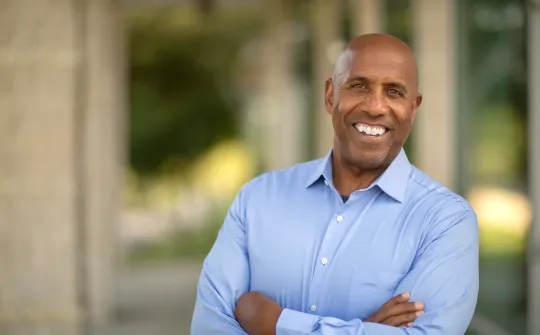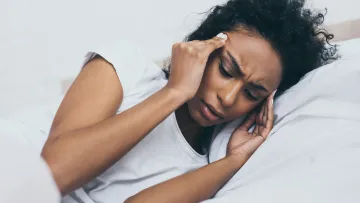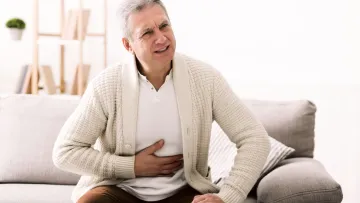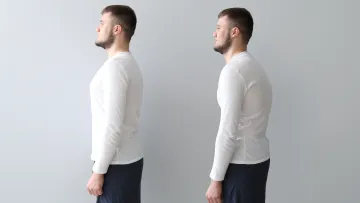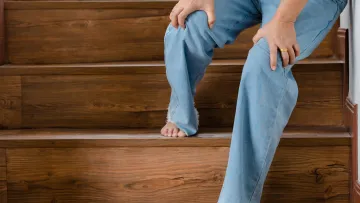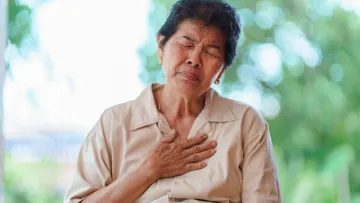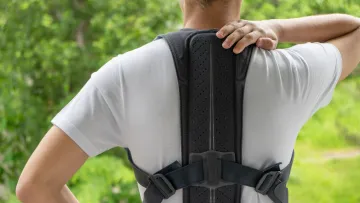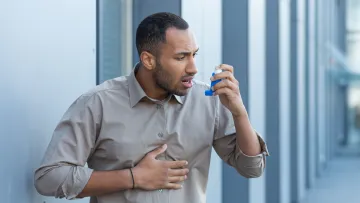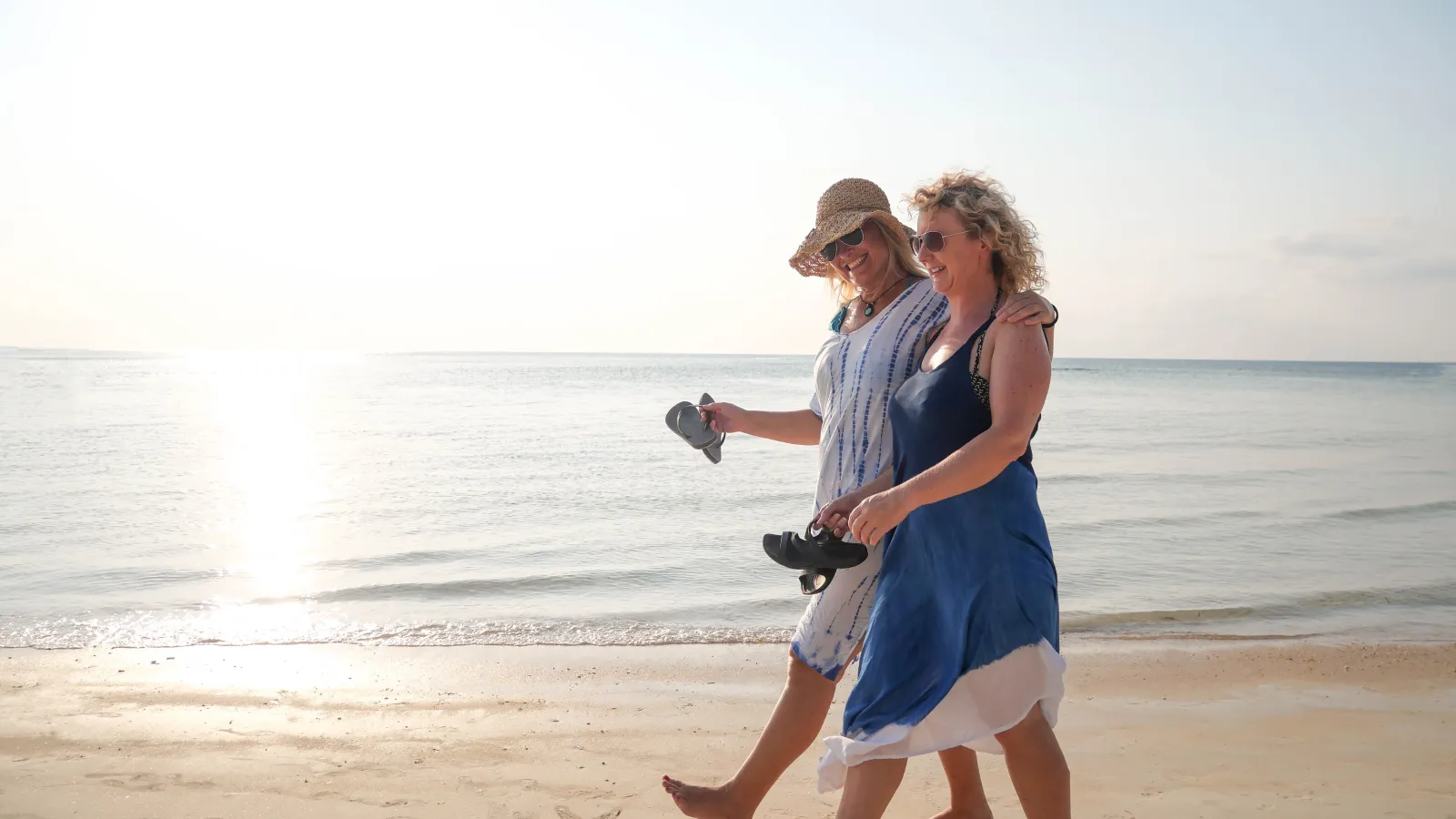
Scoliosis Treatment
About Scoliosis
Scoliosis occurs when your spine curves visibly. It can shift your balance, impede your digestive system, and cause chronic pain. With treatment at our Austin, TX, area offices, you can straighten your spine, improve your posture, and alleviate your health concerns.
See Dr. Robert Josey and Dr. Michael Moghimi at Orthopaedic Specialists of Austin to treat scoliosis using bracing and surgery.
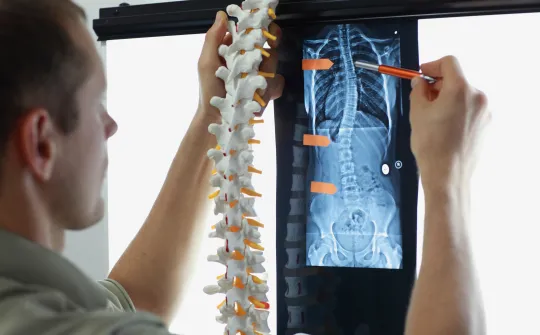
What Is Scoliosis?
Scoliosis is a common musculoskeletal disorder. It causes the spine to develop a sideways curve, usually S-shaped or C-shaped.
There are multiple types of scoliosis. Idiopathic scoliosis occurs most frequently, with the majority of the cases observed in adolescents. In addition to idiopathic scoliosis, other forms of the condition include congenital scoliosis, neuromuscular scoliosis, and late onset scoliosis.
An orthopedic specialist can correct scoliosis with non-invasive treatments such as bracing or physical therapy. In rarer cases, patients may need spinal surgery.
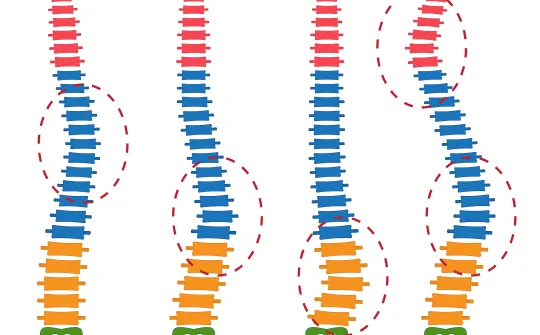
The Difference Between Structural and Non-Structural Scoliosis
Both non-structural and structural scoliosis can affect patients of all ages. Nonetheless, the condition is most common among prepubescent children. It is more likely to affect girls than boys, and there is usually a genetic component. Therefore girls with a family history of scoliosis should have regular spinal screenings.
Non-Structural Scoliosis
Fortunately, once these underlying problems are treated, non-structural scoliosis will go away.
Structural Scoliosis
Frequently, the cause of structural scoliosis is unknown.
The Symptoms of Idiopathic Scoliosis
Idiopathic scoliosis tends to present visibly, changing the shape of your spine.
In addition to spinal curvature, other symptoms include:
Scoliosis Treatment Options
Orthopaedic Specialists of Austin offers comprehensive scoliosis treatment. Dr. Robert Josey and Dr. Michael Moghimi, are fellowship-trained experts in spinal care. They will carefully determine the right treatment for you or your child, considering symptoms and the severity of spinal curvature. Whenever possible, they will begin with non-invasive therapies.
Treatment options at our Austin practice can include:
- Targeted exercise
- Hormone replacement
- Physical therapy
- Bracing
- Dietary changes
- Observation
- Pain medication
- Specialized spinal fusion surgery
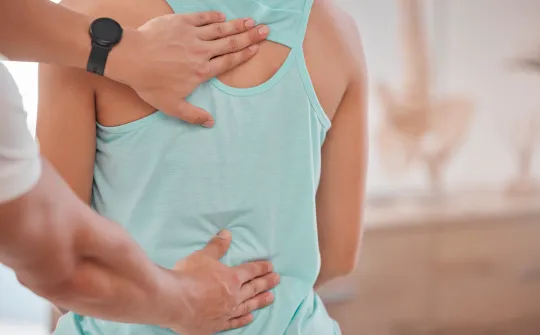
The Truth About Scoliosis Prevention
Scoliosis is not your fault.
Doctors have yet to determine a tried and true prevention method for idiopathic scoliosis and many other types of the condition.
One of the most important things you can do right now is ensuring your child undergoes regular scoliosis exams. The other is ensuring that they get treatment.
Because you're on our website looking into the subject, you're absolutely on the right track.
Here's another bit of reassurance for you: you or your child's scoliosis is treatable. Minimally invasive options like bracing or physical therapy can typically correct the problem.
Even if a patient needs more advanced treatment, we can dramatically improve their scoliosis with a spinal fusion surgery conducted by experts in the field. Thanks to the advancements of modern medicine, you or your child can go on to live a wonderful and healthy life.

Scoliosis Statistics
Though a scoliosis diagnosis may sound frightening, we have a little perspective to keep you grounded. According to the National Scoliosis Foundation, about 2-3% of Americans live with scoliosis. Additionally, most scoliosis patients are 10-15 years old when their symptoms become apparent.
So, if you have scoliosis yourself, there are about six to nine million people in the country just like you or your child.
2-3%
10-15 y/o
How Do You Diagnose Scoliosis?
We help scoliosis patients with treatment, diagnosis, and recovery. From a consultation to a diagnosis, here's how Dr. Robert Josey and Dr. Michael Moghimi determine if a patient has idiopathic scoliosis.
Medical History
Physical Examination
X-ray Exams
Frequently Asked Questions
How does the observation process work?
After you or your child receive a scoliosis diagnosis, we may recommend observation, as opposed to bracing, physical therapy, or surgery. For children, early idiopathic scoliosis diagnosis makes a world of difference.
Even if we only need to observe your child for changes, we can address urgent progression immediately. From regular visits to X-rays every three to six months, we'll help your child stay healthy as they grow up.
For adults, it looks a little different. As patients have finished growing, they usually do not experience such drastic changes in their spinal curvature. So, they only need X-rays roughly every five years to determine any changes in their spine.
Notably, older adults may eventually need treatment. As they age, they may find themselves susceptible to changes in digestion and mobility. They may also experience a significant degree of pain. Other age-related illnesses, such as osteoporosis, can also add complications into the mix.
What is bracing?
Bracing offers a minimally invasive way to correct idiopathic scoliosis and other forms of the condition. Visit Orthopaedic Specialists of Austin in the Austin area to learn about your treatment options.
What Is lumbar fusion surgery?
Whenever possible, we prefer to treat patients with non-invasive options. Still, for those who experience dramatic symptoms like pain or impeded mobility, we can conduct a more advanced treatment: lumbar fusion, or spinal fusion, surgery.
During the surgery, Dr. Moghimi or Dr. Josey will fuse your vertebrae together. To do so, they will connect rods and hooks to your spine. This prevents them from curving.
After the surgery, it will likely take three or four weeks before patients can return to everyday duties. The treatment will impact your range of movement to a minimal degree.
What curve do scoliosis patients have in their spine?
Some patients with scoliosis have an S-shaped curve, while others have a C-shaped curve. If you need treatment for your painful and visibly-curved spinal vertebrae, our Austin orthopedic specialists can help diagnose and surgically repair your idiopathic scoliosis.
What Each Degree of Curvature Means
Not all people with curved vertebrae have diagnosable scoliosis. And, not all people with scoliosis need treatment. Our response will depend on how dramatically your spine has curved. Here are some common benchmarks used to decide a course of action:
Helping Scoliosis Patients of All Ages
While most scoliosis patients are children or adolescents with idiopathic scoliosis, the condition can affect people of all ages.
Some patients are older adults who have had a past surgery and need revisions. Others are adults, usually in their senior years, who have been monitored carefully as their scoliosis slowly but steadily advances.
No matter which group you fall into, you can receive the care you need from our orthopedic specialists.
From diagnosis, to bracing, to physical therapy, Orthopaedic Specialists of Austin will treat you and your family with care and understanding. Time is of the essence when it comes to scoliosis!
